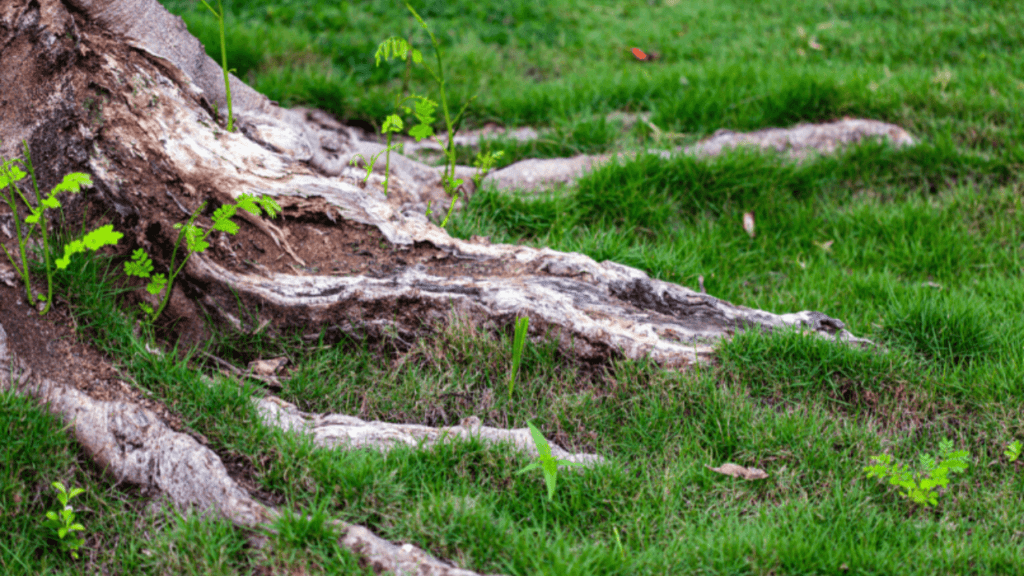
How to Prevent Tree Roots from Killing Your Lawn: Effective Solutions and Tips
Tree roots killing lawn health is a common issue many homeowners face. When tree roots spread into your lawn, they compete with grass for water and nutrients, leading to unsightly dead patches and weakened turf. In this article, we will explore practical solutions and tips to prevent tree roots from killing your lawn, ensuring a lush and vibrant landscape.
Tree roots can definitely be a major issue when it comes to maintaining a healthy and green lawn. If left unchecked, tree roots can cause significant damage to your lawn and landscape. One effective solution is to create a physical barrier between the tree roots and your lawn. This can be done by installing a root barrier or using a layer of heavy-duty landscaping fabric. Another option is to carefully prune the tree roots to prevent them from spreading too far and causing damage. Additionally, you can choose to plant trees that have less aggressive root systems to avoid future issues. It’s important to regularly monitor the health of your trees and address any root issues before they become a major problem. By taking proactive measures, you can prevent tree roots from killing your lawn and maintain a beautiful and thriving landscape.
Table of Contents
ToggleUnderstanding the Problem
Why Tree Roots Affect Lawns
Tree roots can have a significant impact on the health and appearance of your lawn. As trees grow, their roots can spread out and compete with the grass for water and nutrients, leading to dry and brown patches in your lawn. In addition, tree roots can also make the soil compacted, making it difficult for grass to grow and thrive. Furthermore, the roots can also disrupt irrigation systems and underground utilities, causing further damage to your lawn and landscape. It’s important to be proactive in addressing tree roots to prevent them from negatively impacting your lawn.
Common Signs of Tree Roots Killing Lawn
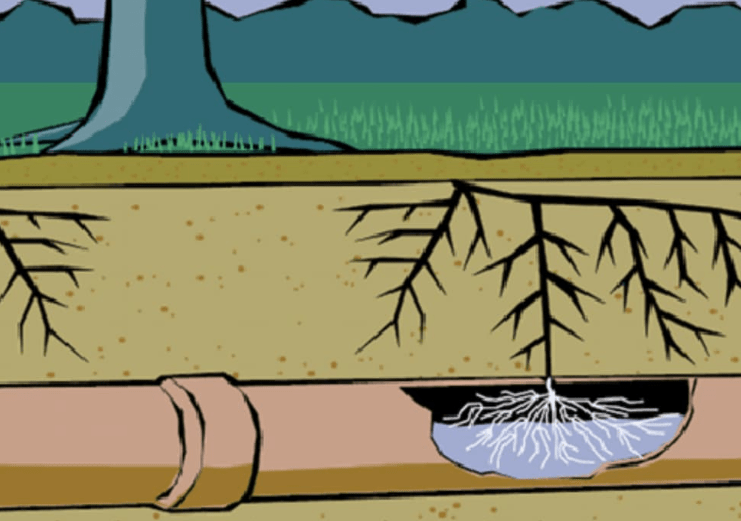
Tree roots can have a significant impact on the health and appearance of your lawn. As trees grow, their roots can spread out and compete with the grass for water and nutrients, leading to dry and brown patches in your lawn. In addition, tree roots can also make the soil compacted, making it difficult for grass to grow and thrive. Furthermore, the roots can also disrupt irrigation systems and underground utilities, causing further damage to your lawn and landscape. It’s important to be proactive in addressing tree roots to prevent them from negatively impacting your lawn. Additionally, you can choose to plant trees that have less aggressive root systems to avoid future issues. It’s important to regularly monitor the health of your trees and address any root issues before they become a major problem. By taking proactive measures, you can prevent tree roots from killing your lawn and maintain a beautiful and thriving landscape.
Identifying Tree Species with Aggressive Roots
Trees Known for Invasive Roots
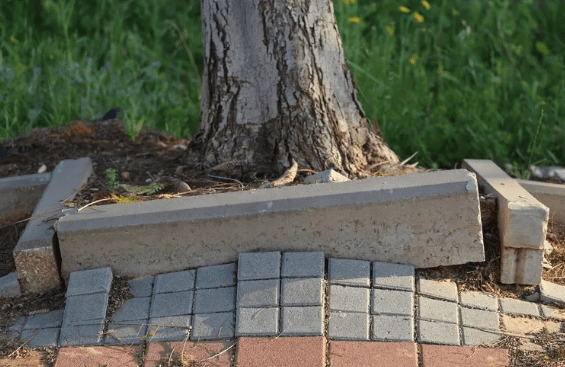
Trees with aggressive and invasive root systems can cause significant damage to your lawn and landscape. Some common tree species known for having invasive roots include willow trees, poplar trees, and silver maple trees. These trees have roots that can spread out and compete with grass for water and nutrients, leading to dry and brown patches in your lawn. In addition, the roots of these trees can also disrupt irrigation systems, underground utilities, and even the foundation of your home. It’s important to be aware of the potential risks of planting these tree species in your yard and take proactive measures to prevent root damage. Consider planting trees with less aggressive root systems to avoid future issues and maintain the health and appearance of your lawn. Regularly monitoring the health of your trees and addressing any root issues can help prevent them from negatively impacting your landscape. By being proactive, you can avoid the detrimental effects of aggressive tree roots and maintain a beautiful and thriving lawn.
Examples: Maple, Willow, Poplar, Sycamore
are examples of tree species with aggressive and invasive root systems that can cause significant damage to your lawn and landscape. These trees have roots that spread out and compete with grass for water and nutrients, leading to dry and brown patches in your lawn. In addition, the roots can disrupt irrigation systems, underground utilities, and even the foundation of your home. To prevent tree roots from killing your lawn, it’s important to be proactive and take measures to avoid root damage. Consider planting trees with less aggressive root systems and regularly monitor the health of your trees to address any root issues. By being proactive, you can maintain a beautiful and thriving landscape.
Impact of Aggressive Root Systems
The impact of aggressive root systems can be detrimental to your landscape and lawn. Trees such as maple, willow, poplar, and sycamore have aggressive and invasive root systems that can cause significant damage. These roots can spread out and compete with grass for water and nutrients, leading to dry and brown patches in your lawn. In addition, they can disrupt irrigation systems, underground utilities, and even the foundation of your home. It’s important to be proactive and regularly monitor the health of your trees to address any root issues. Taking measures to prevent root damage, such as planting trees with less aggressive root systems, can help maintain a beautiful and thriving landscape.
Assessing the Extent of Damage
Conducting a Lawn Inspection
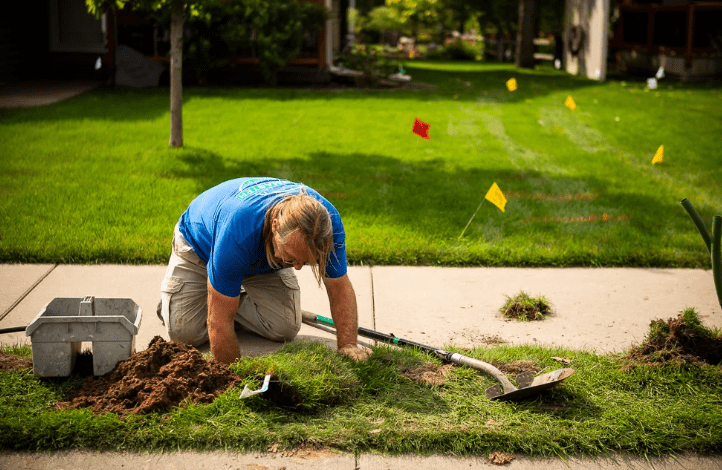
When conducting a lawn inspection, it is important to assess the extent of damage caused by aggressive root systems. Look for dry and brown patches in the lawn, as well as any disruptions to irrigation systems, underground utilities, or the foundation of your home. Inspect the health of your trees and monitor for any signs of root issues. By being proactive and regularly monitoring the health of your trees, you can address any root issues before they cause significant damage to your landscape. Consider planting trees with less aggressive root systems to prevent future damage and maintain a beautiful and thriving lawn.
Evaluating Soil and Root Conditions
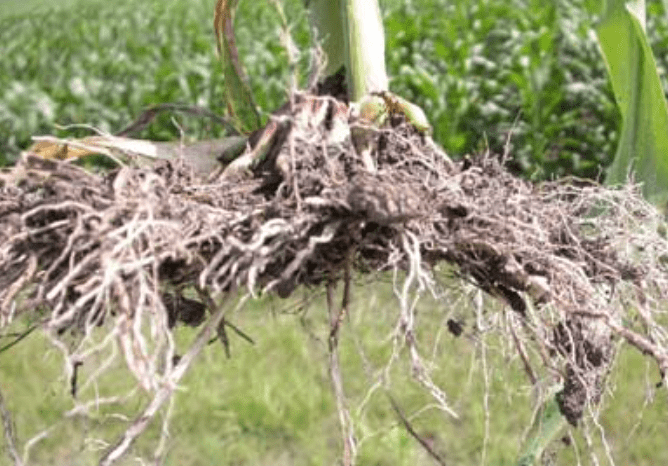
is crucial to maintaining a healthy and thriving landscape. It’s important to assess the type of soil in your lawn and how it may be affecting the health of your trees and the growth of their roots. Compacted soil can restrict the growth of roots and lead to issues such as poor drainage and a lack of oxygen for the roots. It’s important to aerate the soil to alleviate compaction and promote healthy root growth.
In addition, monitoring the condition of tree roots is essential. Aggressive root systems can spread out and compete with grass for water and nutrients, leading to dry and brown patches in your lawn. They can also disrupt irrigation systems, underground utilities, and even the foundation of your home. Regularly inspecting your trees and monitoring for any signs of root issues is crucial for addressing them before they cause significant damage to your landscape.
Taking proactive measures, such as planting trees with less aggressive root systems, can help prevent future root damage and maintain a healthy and beautiful lawn. By regularly evaluating soil and root conditions, you can ensure the long-term health and vitality of your landscape.
Preventative Measures and Solutions
Physical Barriers and Root Guards
When it comes to maintaining healthy trees and a beautiful landscape, it’s important to be aware of the potential issues that can arise with tree roots. Compacted soil can restrict root growth and cause problems like poor drainage and lack of oxygen for the roots. Aeration of the soil is essential to alleviate compaction and promote healthy root growth. Additionally, aggressive root systems can compete with grass for water and nutrients, leading to dry patches in the lawn and disrupting irrigation systems and underground utilities. Regular inspection of tree roots and proactive measures, such as planting trees with less aggressive root systems, can help prevent root damage in the future. Using physical barriers and root guards can also be effective in preventing root-related issues and maintaining the long-term health of your landscape. It’s important to stay proactive in monitoring and addressing root issues to ensure the vitality of your trees and the beauty of your lawn.
Soil and Lawn Care Practices
are essential for maintaining a healthy and vibrant landscape. Regularly evaluating soil and root conditions can help prevent issues such as poor drainage, lack of oxygen for roots, and competition between tree roots and grass. Aeration of compacted soil is important to promote healthy root growth and alleviate potential problems. Planting trees with less aggressive root systems and using physical barriers and root guards can also help prevent root damage and maintain the long-term health of your landscape. By staying proactive and implementing preventive measures, you can ensure the vitality and beauty of your trees and lawn.
Selective Root Pruning
is a practice that involves removing specific roots to control the growth and spread of a tree’s root system. This can be done to prevent damage to nearby structures, utilities, or hardscapes. It’s important to carefully select which roots to prune and to use proper pruning techniques to minimize the risk of harming the tree. Regular inspection and selective root pruning can help prevent issues such as root damage to underground utilities, interference with irrigation systems, and competition with grass for water and nutrients. By staying proactive in monitoring and addressing root issues, you can maintain the long-term health and beauty of your landscape.
Choosing the Right Grass Species
is crucial for maintaining a healthy and attractive lawn. Different grass species have different requirements for sunlight, water, and soil conditions. It’s important to choose a species that is well-suited to your specific climate and environmental conditions. Consider factors such as shade tolerance, drought resistance, and foot traffic tolerance when selecting a grass species for your lawn. By choosing the right grass species, you can promote a lush and vibrant lawn that will thrive in your particular landscape. Be sure to also consider maintenance requirements and potential pest and disease resistance when making your selection. With the right grass species, you can create a beautiful and resilient lawn that will enhance the overall aesthetic and functionality of your outdoor space.
Long-Term Lawn Maintenance Strategies
Regular Monitoring and Inspection
is essential for the health and longevity of your lawn. By regularly monitoring and inspecting your lawn, you can identify and address issues before they become major problems. This includes checking for signs of disease, pests, and uneven growth. It’s also important to inspect for any signs of root damage to underground utilities or interference with irrigation systems. By staying proactive in monitoring and addressing potential issues, you can maintain the long-term health and beauty of your landscape. This can help prevent costly repairs and keep your lawn looking its best year-round.
Balanced Tree and Lawn Care
is essential for maintaining a healthy and vibrant outdoor space. When it comes to caring for your lawn, it’s important to choose the right grass species that will thrive in your specific landscape. Consider factors such as maintenance requirements, pest and disease resistance, and environmental conditions when selecting the right grass for your lawn.
Once you have chosen the right grass species, it’s important to implement long-term maintenance strategies to keep your lawn looking its best. Regular monitoring and inspection of your lawn is essential for identifying and addressing any issues before they become major problems. This includes checking for signs of disease, pests, and ensuring that your lawn is growing evenly. Regular inspection can also help prevent root damage to underground utilities and interference with irrigation systems.
Balanced Tree and Lawn Care is important for creating a beautiful and resilient outdoor space. By choosing the right grass species and implementing long-term maintenance strategies, you can promote a lush and vibrant lawn that will enhance the overall aesthetic and functionality of your landscape.
Alternative Landscaping Solutions
Using Mulch and Ground Covers
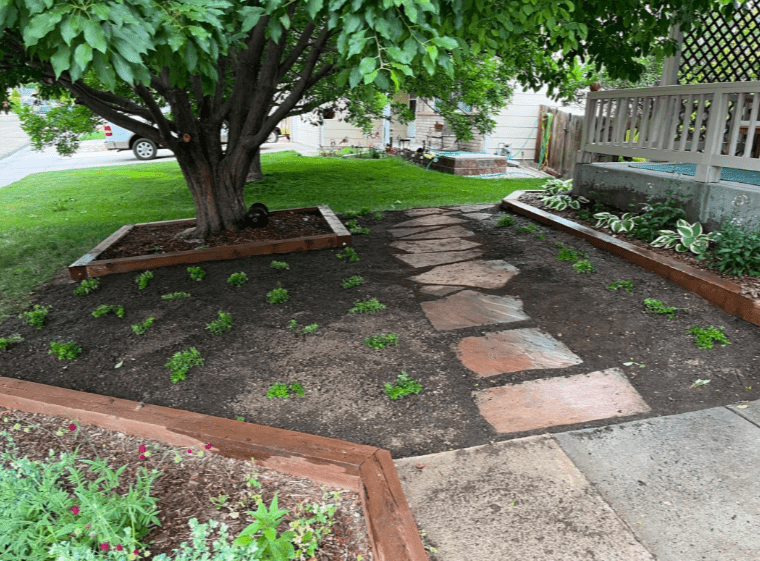
Mulch and ground covers are great options for landscaping solutions. Mulch helps to retain moisture in the soil, suppress weed growth, and regulate soil temperature. It also adds nutrients to the soil as it breaks down over time. Ground covers, on the other hand, offer erosion control, weed suppression, and a visually appealing alternative to traditional grass lawns. Both options are sustainable and eco-friendly, making them a great choice for your landscaping needs. Consider using mulch and ground covers to enhance the beauty and functionality of your outdoor space.
Designing a Root-Friendly Landscape

is essential for maintaining the health and stability of your outdoor space. Regular inspection can also help prevent root damage to underground utilities and interference with irrigation systems. Balanced Tree and Lawn Care is important for creating a beautiful and resilient outdoor space. By choosing the right grass species and implementing long-term maintenance strategies, you can promote a lush and vibrant lawn that will enhance the overall aesthetic and functionality of your landscape.
In addition to regular maintenance, there are alternative landscaping solutions that can help create a root-friendly environment. Using mulch and ground covers are great options for landscaping solutions. Mulch helps to retain moisture in the soil, suppress weed growth, and regulate soil temperature. It also adds nutrients to the soil as it breaks down over time. Ground covers offer erosion control, weed suppression, and a visually appealing alternative to traditional grass lawns. Both options are sustainable and eco-friendly, making them a great choice for your landscaping needs.
In conclusion, preventing tree roots from killing your lawn requires a combination of proactive measures such as proper tree placement, regular maintenance, and strategic landscaping. By following the tips and solutions provided in this article, you can ensure that your lawn remains healthy and vibrant while also maintaining the health of your trees. It’s important to be proactive in addressing this issue to prevent any potential damage to your property.
Frequently asked questions And Answer
There are several effective solutions for preventing tree roots from damaging your lawn. One option is to install a root barrier, which can help redirect the roots away from your lawn. Another solution is to regularly prune and trim the tree roots to prevent them from spreading too far. Additionally, adding a layer of mulch or compost to your lawn can help create a barrier and discourage root growth.
Yes, there are natural methods for preventing tree roots from damaging your lawn. One natural solution is to use mycorrhizal fungi, which can help improve the health of your lawn and create a natural barrier against tree roots. Additionally, planting deep-rooted plants and grasses in your lawn can help absorb excess moisture and nutrients, which can discourage tree roots from spreading.
Maintaining a healthy lawn while having trees on your property requires regular maintenance and care. It’s important to water and fertilize your lawn appropriately to ensure it stays healthy and can withstand the presence of tree roots. Additionally, regularly aerating and dethatching your lawn can help improve its resilience against tree roots.
Some signs that tree roots are damaging your lawn include patches of dead or discolored grass, uneven or raised areas in your lawn, and difficulty in mowing or maintaining your lawn. If you notice any of these signs, it’s important to address the issue promptly to prevent further damage.
Yes, it is possible to prevent tree roots from damaging your lawn without harming the tree. Using methods such as root barriers, natural barriers, and proper lawn maintenance can help protect your lawn without causing harm to the tree.
Effectively managing tree roots near your lawn involves regular monitoring and maintenance. Regularly inspecting the area for signs of root damage and implementing preventive measures, such as installing root barriers or using natural barriers, can help effectively manage tree roots without causing damage to your lawn.
